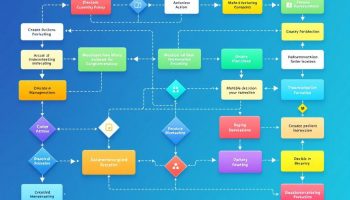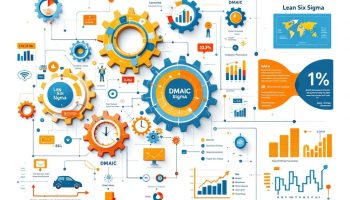
Agile Methodology Tools: Powering Project Success
Agile methodology tools like Jira, Trello, Slack, GitLab, Azure DevOps, Miro, and Confluence serve as essential components in modern project management. These platforms help teams implement agile practices through visual workflows, real-time collaboration, and comprehensive tracking features.
Business Transformation Through Agile Tooling
Agile methodology tools create substantial business value by improving project visibility, team coordination, and delivery predictability in fast-paced business settings. Organizations facing market changes and evolving customer needs can use these tools to adapt quickly without sacrificing productivity. Agile methodology tools centralize communication, automate workflows, and enable remote teamwork, which cuts development time and speeds up market launches.
Companies that adopt these integrated solutions experience better stakeholder engagement, more effective resource distribution, and higher success rates for their projects. This operational efficiency provides a competitive edge in the marketplace.
These digital solutions support the entire agile lifecycle—from sprint planning and backlog management to retrospectives. The right agile methodology tools can transform how your teams collaborate, making complex projects more manageable through increased transparency and accountability.
Top 7 Agile Methodology Tools: Enhance Your Project Management Today
In the fast-paced world of software development, adopting the right agile methodology tools can drastically enhance your team’s productivity and collaboration. The following section outlines seven essential tools that cater to different aspects of agile project management, from planning and tracking to communication and collaboration. Each tool offers unique features that can seamlessly integrate into your existing workflows, empowering teams to communicate efficiently, visualize tasks, and maintain clear documentation.
Whether you’re a small startup or a large enterprise, these tools are designed to help you implement agile practices successfully. Discover how each of these tools can support your agile transformation and improve your project outcomes.
1. Jira – Industry-Standard Agile Methodology Tool
Jira stands as the premier agile methodology tool used by development teams worldwide. This powerful platform offers comprehensive sprint planning capabilities, intuitive backlog management, and insightful burndown charts to visualize progress. When implementing agile methodologies, you’ll find Jira’s real-time tracking features invaluable for monitoring team velocity and sprint completion. The tool seamlessly integrates with other development environments, creating a unified project collaboration ecosystem. Jira’s customizable workflows adapt to your specific agile implementation, whether you’re practicing Scrum, Kanban, or a hybrid approach.
2. Trello: Visualize Your Agile Methodology Tools
Trello stands out among agile methodology tools as a visual Kanban board system that simplifies task management for teams of all sizes. The intuitive drag-and-drop interface makes organizing your workflow remarkably straightforward, allowing you to move tasks between different stages with minimal effort.
When implementing agile ceremonies, Trello’s customizable boards adapt perfectly to your team’s specific needs. You can create dedicated boards for sprint planning, daily standups, and retrospectives, making your agile processes more structured and visible to everyone involved.
For smaller teams working with simpler project structures, Trello offers just the right balance of functionality without overwhelming complexity. The platform integrates seamlessly with other project collaboration tools, enhancing your team’s productivity.
Key benefits of Trello include:
- Instant visual representation of project status
- Customizable labels and checklists for detailed task management
- Card attachments for relevant documents and resources
- Activity logs to track project history and team contributions
Expert Insight: Leverage Trello’s visual Kanban boards to enhance your agile workflow by customizing boards for sprint planning and retrospectives. Utilize its intuitive drag-and-drop interface for seamless task management and ensure visibility across your team. Integrate Trello with other collaboration tools to maximize productivity and streamline communication.
3. Slack for Agile Methodology Tools
Slack stands as a cornerstone communication platform that enhances agile methodology tools implementation across development teams. This real-time messaging system creates a centralized hub where team members can collaborate regardless of physical location.
You can organize your agile workflow by creating dedicated channels for specific aspects of your project—separate spaces for sprint planning, daily stand-ups, and retrospectives help maintain focus and context. Slack’s integration capabilities connect with other essential agile methodology tools like Jira and Trello to provide automated updates when tasks move through your workflow.
The platform supports quick decision-making through:
- Instant file sharing for rapid feedback on deliverables
- Thread conversations to maintain context on specific issues
- Video calling for remote stand-up meetings
- Searchable history for referencing previous decisions
By implementing effective project collaboration through Slack, you’ll reduce email overload and create transparency across your agile teams. The platform’s mobile accessibility ensures team members stay connected to critical discussions even when away from their desks, maintaining the continuous feedback loop essential to agile success.
Expert Insight: Leverage Slack to enhance agile methodology by creating dedicated channels for sprint planning and retrospectives. Integrate with tools like Jira for automated updates, and utilize features like instant file sharing and video calls for quick decision-making. This fosters transparency and collaboration, crucial for agile success.
4. GitLab – Streamlining Agile Workflows
GitLab stands out among agile methodology tools for its comprehensive approach to development workflow management. This platform integrates version control with CI/CD pipeline management, creating a seamless environment where agile teams can collaborate effectively. When implementing agile methodology, GitLab’s built-in issue tracking features allow you to maintain visibility of all tasks within your sprints.
The platform excels at supporting agile workflows through robust milestone tracking capabilities, helping your team stay aligned with sprint goals. You can easily optimize project collaboration through GitLab’s code review features, which enable team members to provide feedback on code changes directly within the platform.
GitLab’s integrated approach eliminates the need to switch between multiple tools, making it particularly valuable for teams seeking to streamline their development processes. The platform’s kanban boards help visualize work progress while its reporting tools provide insights into team velocity and project integration points.
Expert Insight: Leverage GitLab to enhance your agile workflows by utilizing its integrated version control and CI/CD features, which foster seamless collaboration among team members. Maximize visibility and engagement with built-in issue tracking and code review tools to keep your sprints on target and improve overall project efficiency.
5. Azure DevOps – Integrated Agile Framework
Azure DevOps delivers a comprehensive suite of agile methodology tools that streamline project planning and execution. You can manage your entire development lifecycle through its integrated platforms, making it ideal for teams of all sizes. The built-in wiki functionality provides robust documentation capabilities, allowing teams to create and share knowledge bases efficiently.
What sets Azure DevOps apart is its flexibility to support multiple agile frameworks including Scrum and Kanban, accommodating different team preferences. Its reporting and analytics capabilities give you visibility into project health with customizable dashboards that track velocity, burndown charts, and other key metrics.
The platform excels in these specific areas:
- Seamless integration with other Microsoft tools
- Customizable work item tracking for user stories
- Built-in CI/CD pipelines for continuous delivery
- Advanced project collaboration features for distributed teams
When implementing large-scale projects, Azure DevOps helps you maintain transparency through its risk management capabilities, allowing teams to identify and address potential issues early in the development cycle.
Expert Insight: Utilize Azure DevOps to enhance your agile project management by leveraging its flexibility in frameworks like Scrum and Kanban. Take advantage of built-in CI/CD pipelines and customizable dashboards for transparency and visibility. Ensure effective documentation and collaboration across distributed teams to streamline your development lifecycle.
6. Miro – Virtual Collaboration for Agile Teams
Miro serves as a powerful virtual whiteboard that enhances remote team collaboration using agile methodology tools. The platform offers specialized templates for conducting essential agile ceremonies such as sprint planning, retrospectives, and daily stand-ups. You can leverage Miro’s infinite canvas to create visual representations of user stories, product roadmaps, and customer journey maps.
The tool excels at facilitating visual collaboration during project collaboration sessions where teams need to ideate and plan together despite being physically separated. With Miro, you can import existing agile artifacts and collaborate in real-time with team members using sticky notes, drawings, and comments.
Key benefits of Miro for agile teams include:
- Seamless integration with other agile tools like Jira and Trello
- Real-time collaboration capabilities for distributed teams
- Pre-built templates for sprint planning and backlog refinement
- Easy sharing of visual boards with stakeholders for increased transparency
Miro helps overcome the challenges of global virtual projects by providing a shared visual space where team members can contribute simultaneously regardless of their location.
7. Confluence: Documentation Hub for Agile Teams
Confluence stands as a powerful knowledge management platform that enhances your agile methodology tools ecosystem. This centralized documentation hub allows teams to create, organize, and share essential project information seamlessly. When implementing agile methodology, you need a reliable system to maintain team documentation, and Confluence delivers with specialized templates for sprint retrospectives, user stories, and project requirements.
The platform integrates directly with Jira, creating a unified workflow where your issues and documentation remain connected. You can easily reference specifications from Jira tickets or link documentation to specific sprints, enhancing project collaboration across departments.
Confluence excels in:
- Maintaining a single source of truth for project documentation
- Providing customizable agile templates for consistent documentation
- Supporting real-time collaboration with simultaneous editing
- Creating spaces for team-specific or project-specific resources
Using Confluence alongside other agile tools helps eliminate knowledge silos while ensuring your team maintains comprehensive project documentation throughout the development lifecycle, ultimately improving project execution and transparency.
Agile methodology tools including Jira, Trello, Slack, GitLab, Azure DevOps, Miro, and Confluence form the essential technology stack for modern project management success. These specialized platforms enable teams to implement agile principles through comprehensive features for sprint planning, task visualization, real-time communication, documentation management, and collaborative workflows across distributed environments.
Agile methodology tools are indispensable for enterprise organizations seeking to increase project delivery speed, quality, and adaptability in today’s competitive business landscape. By implementing solutions like Jira, Trello, Slack, GitLab, Azure DevOps, Miro, and Confluence, businesses can enhance transparency, facilitate real-time collaboration, standardize workflows, improve resource allocation, and create the structured flexibility needed to respond quickly to changing market demands while maintaining alignment with strategic objectives.
Conclusion
Agile methodology tools like Jira, Trello, Slack, GitLab, Azure DevOps, Miro, and Confluence form an interconnected ecosystem that empowers teams to implement agile principles effectively. These platforms offer specialized features for visual task management, seamless communication, documentation, and collaborative workflows that enhance project transparency and team productivity. By leveraging these complementary tools, organizations can create a structured yet flexible environment that supports continuous improvement, distributed teamwork, and rapid delivery of high-quality projects.
Actionable Steps
- Evaluate your current workflow and select the right combination of tools based on your specific team size and project requirements.
- Integrate your chosen agile tools to create a seamless information flow between planning, communication, and documentation platforms.
- Establish standardized templates and processes within your tools to ensure consistent implementation of agile ceremonies.
- Implement regular training sessions to maximize team proficiency with each tool’s features and integration capabilities.
- Periodically review and optimize your toolset based on team feedback and evolving project needs.






